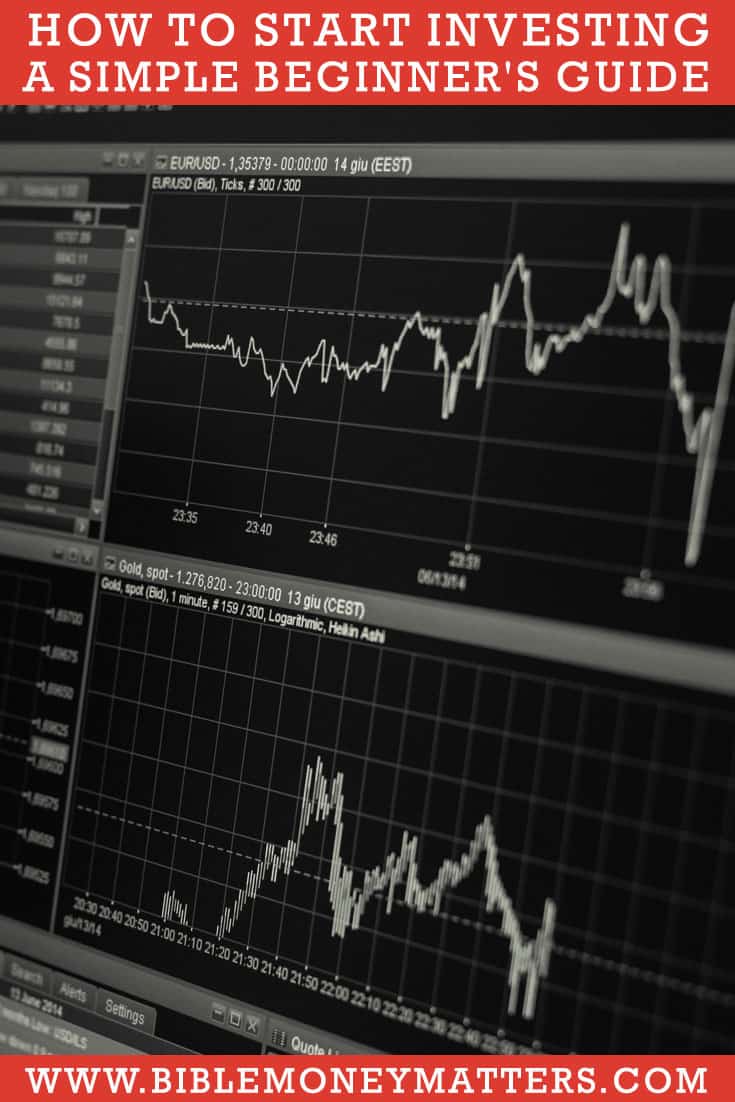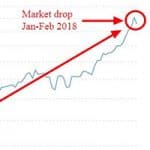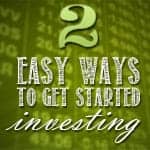The oldest rule in investing is also the simplest: “Buy low, sell high.”
While it seems blindingly obvious and begs the question of why anyone would want to do anything else when investing, you might be surprised at how hard it is to put into practice.
Investing is a discipline which plays not only on astute analysis and remarkable luck but also on people’s behavioral responses. Holding onto your stocks during periods of intense market volatility takes a lot of courage and isn’t what the human brain is wired to withstand.
But how do you approach investing if you don’t have a background in it?
Without much prior experience, it’s tough to say.
There’s an ocean of information out there and sorting through it requires deliberate, thoughtful reflection when piecing together what you’ve read.
When it comes to growing your wealth and working toward financial independence, investing is an important tool. Through investing, you can buy assets which, hopefully, grow in value, whether it is a home, a retirement account, stocks, or bonds.
Let’s walk through some simple steps on how to start investing money.
Quick Navigation
- First, Invest in Yourself
- Develop Your Investing Approach
- 1. Read a Lot About the Market
- 2. Start Looking into Individual Companies
- 3. When to Start Investing: Take Action
- 4. Continue Following the Companies and Markets
- 5. How to Start Investing – Keep It Simple, Invest in ETFs
- What Age to Start Investing and How Much to Invest
- When Investing, Doing Less is More
First, Invest in Yourself
This past summer, I attended a wedding with my wife and her family where my brother-in-law approached me with a conversation about investing. He wanted to know how he could replicate the performance seen by the world’s greatest investors.
Essentially, he wanted to turn a small sum of money into an account balance with two commas in quick fashion.
If only I knew the sure-fire way to make that path my own reality. If I did, we wouldn’t have driven to the wedding in a rented subcompact.
I cautioned him those investors are truly gifted and the exception to the norm. But what I then told him is the common trait these legendary financiers share: following a systematic and disciplined approach to investing.
I told him regardless of investing style, timeframe, or philosophy, they all have discipline, transact based on logical, informed thinking and do not let emotions drive their decisions. These are the most important elements required for investing success. But don’t just take my word for it, many folks seem to agree[1],[2],[3],4.
The aforementioned investing strategies are merely a means to an end and come later. Any investor starting out should develop these core principles and learn to stick to them during times of good and bad.
Develop Your Investing Approach
As I explained this to my brother-in-law, I could see his disappointment in my not knowing any shortcuts to overnight investing success. However, we launched into a discussion around how he could develop his own disciplined investing approach by first becoming a student of markets.
Knowing that this discussion could become overly cumbersome in just one conversation, I decided to share only introductory steps.
Investing isn’t easy but, at the same time, it shouldn’t be seen as a frightening endeavor. If done wisely and consistently, investing can separate you from retiring comfortably at a reasonable age and working into your golden years out of necessity.
So, with that thinking, I will do the same here. Short of a formal education in finance, my five high-level steps for gaining familiarity with investing in the market are as follows:
1. Read a Lot About the Market
Sounds logical, right? You’d be surprised by how many people I’ve heard say they got into a stock simply because so-and-so recommended it.
This person winds up not doing a lick of due diligence before investing. This person didn’t know what was happening in the market, nor anything about the company beyond it being a hot stock tip.
To counteract this, I suggest first beginning by reading reputable sources that discuss markets (e.g., MarketWatch, the Financial Times, the Wall Street Journal, Reuters, Yahoo Finance, among others). As you read more, I suggest approaching every article with a heavy dose of skepticism.
This will make you more likely to piece together content from multiple sources and form your own thinking about markets and the companies in them.
As an exercise, take a moment to read this article about why stock market bulls are banking on January 2019 to steady the market. After you’ve read it, what were the main, salient points that stood out to you? I found the following to be most important:
- The market ended the year on a roller coaster ride and lower overall. Many investors feel the market craves clarity on the market’s path and wonder how the next couple of months will unfold. Stock market bulls (investors who want the market to rise) hope progress on U.S.-China trade negations, corporate earnings, economic data, and the Fed’s recognition of how interest rates affect inflation with their policy tools will prove the bull market is alive and well..
- Many economic reports show a slowing housing market but strong employment and wage numbers coupled with strong retail spending and consumer confidence readings. Investors question if this economy is beginning to falter or if the recent pullback is merely a part of the overall aging bull market.
- One chief investment strategist offers the following, “Some recent assurances about [Federal Reserve Chairman Jerome] Powell’s job, movement on trade discussions, and, while somewhat mixed of late, further economic evidence that the U.S. is still growing above [average], will coalesce to form the base for the next sustained rally.”
- Analysts and market watchers are keenly watching market and economic activity in the coming months for signs of a continued bull market or the beginning of the end to this upward trajectory we’ve seen since the Great Recession.
- The market volatility of the past couple months has many worried about the market’s trajectory and require more data to decide the fate of the market. Robust economic data will tell the story and if as strong as some think, has many investors feeling the fear of a recession is overdone. After all, more than 2/3’s of American economic activity comes from retail sales, and these figures appear to be strong on the backs of a strong labor market.
- Of further note, this is where the skepticism I mentioned above should come into play. This conflict means someone is wrong, but who? Strong retail sales figures underscore economic strength but the market fears the economy is slowing as evidenced by the stock market pullback. Perhaps both are right and yet both are wrong. The truth likely lies somewhere in between and will require more data to bear out.
- Stock market bulls contend the Federal Reserve will realize inflation isn’t rising as quickly as feared and the Fed has softened its language in recent months. Jerome Powell communicated to the market a need for less tightening than previously announced but remained dedicated to its monetary policy tightening if data warrants.
- The earlier pullback in stocks came as the market feared the Fed would be relentless in raising rates and it would bring the economic expansion to an end. But the Central Bank has moderated its language and the economic data since has mostly held up.
- Another chief market strategist thinks we’ve run out of tinder to burn this market down. The intensity of the decline allows him to have confidence we’re close to a bottom. He even states if it does move lower, it isn’t going to be much more from here.
- Simply put, a lot of negative outcomes have been priced into the stock market. More could be yet to come, but they are of a self-inflicted nature.
- The Federal Reserve could choose to tighten at an unwarranted pace, trade negotiations with China could break down, economic results could soften as a tight labor market makes it hard for the economy to continue growing, and the holiday season could end up disappointing. There are a number of negative items included in the stock market’s predictions for future performance and certainly ones which are warranted.
- However, there are also positive potential items as well mentioned above (i.e., softening rhetoric from the Fed, continued robust economic data, excellent holiday earnings announcements, and trade deals). Given the pullback, markets appear weak and have taken heed of looming risks and thus tempered optimism until more concrete data present.
- Bottom line: the market hasn’t had investor conviction in either direction. Market turmoil has colored the end of 2018 and more information is needed to decide the fate of this market rally.
As you read more pieces like this, reflect after each one and begin to piece together content from what you’ve read. Building this understanding won’t happen overnight.
2. Start Looking into Individual Companies
Naturally, you will come across individual companies. You should identify companies consistently performing well or making strides to improve. I recommend starting your journey by researching five companies you admire (preferably in different industries) and cultivating ideas about the strategies of each firm, their competitive advantages, and the core value they provide.
If you don’t believe any of these items to be durable over time, I would suggest moving on. Recognize what sets these companies apart from their peers, the prospects for the markets in which they operate (e.g., growing market vs. declining market), and how the market values them.
Cast aside companies if you uncover something you don’t like. Don’t let sunk costs guide your thinking.
Ultimately, a stock represents a piece of a company, so sustainable profitability is an important factor. You really want to assess how profitable these companies can be, because before you decide how much to pay for a stock, you need to understand how much money that company makes.
If the company makes a lot of money consistently, you will likely have to pay more to acquire the stock.
3. When to Start Investing: Take Action
At this point, if you’ve gotten a decent handle on the overall market’s activity and analyzed a set of attractively-valued companies you think stand out from the rest, it’s your time to pull the trigger.
For the reasons listed above, it is always prudent to be cautious when it comes to investing. However, if you feel conviction in the companies you’ve analyzed, there are a number of retail brokers you may use to invest in individual stocks (e.g., Interactive Brokers, T.D. Ameritrade, Charles Schwab).
4. Continue Following the Companies and Markets
By doing your due diligence, you will be able to follow these companies and see if they continue to perform as you expect. If a company makes a decision you don’t agree with or think will adversely impact its value going forward, you might consider cutting your losses short and moving on.
5. How to Start Investing – Keep It Simple, Invest in ETFs
Investing is hard.
It’s more art than exact science.
By writing this step-by-step guide, my goal is not to simplify the act of investing. In fact, what I want to convey as clearly as possible is just how difficult it is to invest in individual stocks.
Investing is so much more than following some rules of thumb. Getting an edge is difficult so you shouldn’t develop irrational self-confidence and think you have an investing edge when you really don’t.
Usually, being humble and saying to yourself that you don’t really know can be great to steady your decision-making.
If you don’t have confidence in selecting individual companies to outperform the market, another strategy is to use exchange traded funds (ETFs) to invest. You can consider investing in low-cost ETFs through brokerages (e.g., Vanguard) or robo-advisors (e.g., Betterment).
What Age to Start Investing and How Much to Invest
Personally, I use both of those services to hold my ETFs. Both services offer commission-free trades, which makes it great to start with any amount of money you can afford to invest. I started using these services in my mid-20s after having used Scottrade/T.D. Ameritrade to invest in individual securities.
Now, I prefer Betterment because it automates my ETF holdings based on scientific research matched to my stated financial goals.
For example, I have a Roth IRA account with the stated financial goal of growing money through retirement in about 30 years. Because of this goal, Betterment chooses to hold a diverse portfolio of 90% ETFs ranging from small cap value, to globally diversified ETFs.
I recommend ETF investing be how you start your investing journey, especially when you can hold these investments for long periods of time. This allows the last real-edge in investing to work its magic: time in quality investments.
When Investing, Doing Less is More
I think about smart investing in a way that minimizes mistakes instead of pursuing maximum gains. I don’t like taking on uncompensated risk.
Take the classic example of deciding to pay off student loans or invest.
First, you must distinguish between the expected return which comes from investing and the guaranteed return received from paying off debt.
Try to keep in mind a sustainable portfolio requires a healthy balance of risk and reward. It requires exposure to many different investments and ways to earn a return on your money.
I keep the following items in mind when investing:
- Steer clear of all avoidable risks. Don’t take on unnecessary risk when the probability of a better investment outcome doesn’t exist
- Be cautious and highly skeptical of your conclusions and whether you feel you possess some edge. It is much more likely you don’t have one when compared to the deep pockets spending endless time and money seeking the next edge
- Minimize the number of times you touch your portfolio. High portfolio turnover in search of better investments often leads to negative consequences for your returns
- Avoid big mistakes. You stand to gain a lot more by doing nothing than thinking you have some edge (when you really don’t) and acting upon it
When investing, doing less is more. Therefore, I recommend investing through low-cost ETFs.
Investing well can produce very rewarding experiences you share with those you love. For me, it allowed me to buy my first home and now to grow the assets necessary to purchase my next one together with my wife to start our family.
In general, developing your own disciplined investing approach based on rational, informed decision-making can lead to financial independence.
Learning how to invest wisely at a young age will have you maximize your youth by allowing compounding to work to your benefit. Do yourself a favor and invest in yourself by following these five steps to begin investing.
This article was written by Riley Adams of Young and The Invested. He is a CPA, has a master’s degree in economics and is a senior financial analyst at a Fortune 500 company. He enjoys helping others navigate the sometimes-murky waters of finance.
| Robo-Advisor | Assets Under Management (AUM) | Annual Fee | Account Minimum | Bonuses | Review |
|---|---|---|---|---|---|
| Betterment | $15 billion | 0.25% of account balance. 0.40-0.50% w/ human advisors | None | Up to one year managed FREE | Review |
| Wealthfront | $12 billion | 0.25% of account balance | $500 | $5k managed FREE (Bible Money Matters readers) | Review |
| M1 Finance | $1 billion | FREE (fees for add-on services) | None | Review | |
| Blooom | $3 billion | $10/month any account size | None | FREE 401(k) Checkup | Review |
| Axos Invest | $153 million | 0.24% of account balance. | $500 | Review | |
| Acorns | $1 billion | $1/month under $5k. 0.25% of account balance above $5k. Free for college students. | None | Review | |
| Public | FREE | None | Free stock up to $15 | Review | |
| Stash Invest | $600 million | $1/month under $5k. 0.25% of account balance above $5k. | $5 | $5 New Account Bonus (Bible Money Matters readers) | Review |
| SigFig | $120 million | Under $10k FREE; 0.25% of account balance above $10k | $2,000 | ||
| Personal Capital | $8.5 billion | 0.49% to 0.89% of account balance | $25,000 | Review | |
| Wealthsimple | $5 billion | $0-$99,999 0.50%/yr; $100k+ 0.40%/yr | None | Up to $10k managed free (Bible Money Matters readers) | Review |
| Charles Schwab | $15.9 billion | FREE (They require you to hold 6-30% of portfolio in cash) | $5,000 | ||
| Fidelity Go | N/A | 0.35% of account balance; | $5,000 | ||
| Vanguard | $101 billion | 0.30% of account balance | $50,000 |






Investing portfolio should be Investing more, spending less and reducing debt. I have also some investment, but your post teaches how to invest in the right way in time. It’s really innovative post.
Thanks! Keep Posting